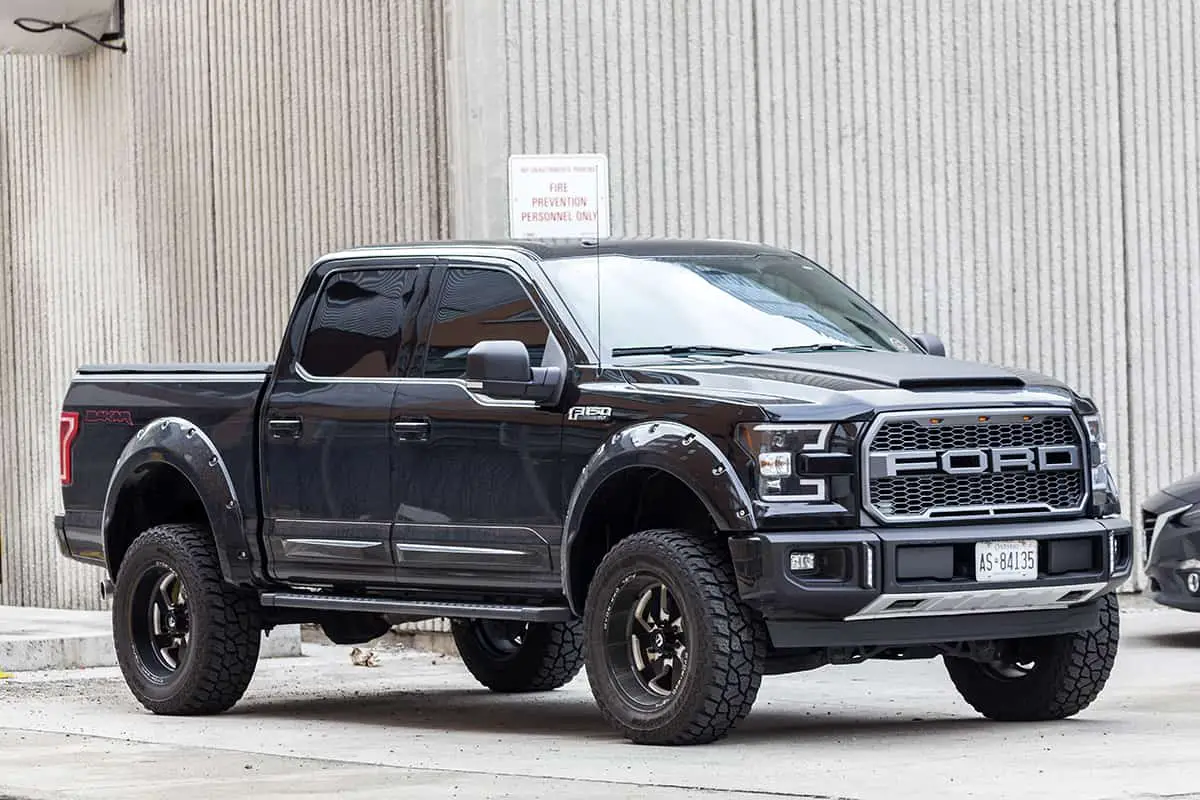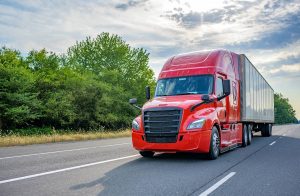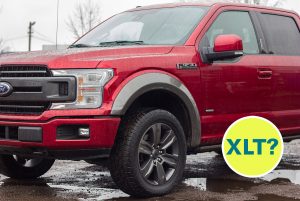Ford is a well-known American automaker that has been producing reliable pickup trucks for decades. Their pickups are popular among both individuals and businesses due to their durability, versatility, and performance. When it comes to Ford pickup truck sizes, there are several options to choose from, ranging from the compact to the heavy-duty.
In this guide, we’re going to explore the various Ford pickup truck sizes, take a look at the interior dimensions, and discuss why pickup truck sizes matter in the first place.
Ford Trucks
First and foremost, we have to talk about the lineup of Ford pickup trucks. If you navigate to the official Ford website and look at the truck options, you’ll see that there are 5 distinct models, namely:
Ford Truck Size Comparisons
There are several factors that play a role in the size of a Ford truck, including its cabin style and bed length. Let’s take a look at the size of each truck.
1. Maverick (4 × 2 and AWD SuperCab)
| Parameters | Measurement |
| Length | 199.7 in. |
| Height | 68.7 in. |
| Width w/ mirrors (folded) | 83.5 in. (77.9 in.) |
| Wheelbase | 121.1 in. |
| Front track | 63.4 in. |
| Rear track | 62.8 in. |
| Front overhang | 34.1 in. |
| Rear overhang | 44.5 in. |
| Ground clearance | 8.3 in. |
| Bed length | 54.4 in. |
| Bed width | 53.3 in. |
| Cargo volume | 33.3 cu. ft. |
2. Ranger (4 × 2 SuperCab)
| Parameters | Measurement |
| Length | 210.8 in. |
| Height | 70.7 in. |
| Width w/ mirrors (folded) | 85.8 in. (77.8 in.) |
| Wheelbase | 126.8 in. |
| Front track | 31.4 in. |
| Rear track | 61.4 in. |
| Front overhang | 35.8 in. |
| Rear overhang | 48.2 in. |
| Ground clearance | 8.4 in. |
| Bed length | 72.8 in. |
| Bed width | 44.8 in. |
| Cargo volume | 51.8 cu. ft. |
3. F-150 (4 × 2 Regular Cab)
| Parameters | Measurement |
| Length | 209.1 in. |
| Height | 75.6 in. |
| Width w/ mirrors (folded) | 95.7 in. (83.6 in.) |
| Wheelbase | 122.8 in. |
| Front track | 67.9 in. |
| Rear track | 68.3 in. |
| Front overhang | 37.6 in. |
| Rear overhang | 48.6 in. |
| Ground clearance | 8.7 in. |
| Bed length | 67.1 in. |
| Bed width | 50.6 in. |
| Cargo volume | 52.8 cu. ft. |
4. Super Duty (4 × 2 Regular Cab)
| Parameters | Measurement |
| Length | 231.8 in. |
| Height | 78.9 in. |
| Width w/ mirrors (folded) | 105.9 in. (N/A) |
| Wheelbase | 141.4 in. |
| Front track | 69.5 in. |
| Rear track | 75.2 in. |
| Front overhang | 38.2 in. |
| Rear overhang | 52.2 in. |
| Ground clearance | 9.7 in. |
| Bed length | 81.9 in. |
| Bed width | 66.9 in. |
| Cargo volume | 65.4 cu. ft. |
5. F-150 Lightning (4 × 4 SuperCrew)
| Parameters | Measurement |
| Length | 232.7 in. |
| Height | 78.3 in. |
| Width w/ mirrors (folded) | 96.0 in. (83.6 in.) |
| Wheelbase | 145.5 in. |
| Front track | 68.1 in. |
| Rear track | 68.3 in. |
| Front overhang | 37.8 in. |
| Rear overhang | 49.4 in. |
| Ground clearance | 8.4 in. |
| Bed length | 67.1 in. |
| Bed width | 50.6 in. |
| Cargo volume | 52.8 cu. ft. |
Ford F-150 Interior Dimensions
While knowing how the exterior dimensions of a Ford truck is important, it can be just as important to understand how spacious its interior is. Here, we’re going to take a look at the interior measurements of each of the 5 Ford trucks.
| Parameters | Maverick 4 × 2 SuperCab | Ranger 4 × 2 SuperCab | F-150 4 × 2 Regular Cab | Super Duty 4 × 2 Regular Cab | F-150 Lightning 4 × 4 SuperCrew |
| Front headroom | 40.3 in. | 39.8 in. | 40.8 in. | 40.8 in. | 40.8 in. |
| Rear headroom | 39.6 in. | 35.9 in. | N/A | N/A | 40.8 in. |
| Front legroom | 42.8 in. | 43.1 in. | 43.9 in. | 43.9 in. | 43.9 in. |
| Rear legroom | 35.9 in. | 30.4 in. | N/A | N/A | 43.6 in. |
| Front hip room | 55.4 in. | 55.8 in. | 62.5 in. | 62.5 in. | 62.5 in. |
| Rear hip room | 54.1 in. | 55.3 in. | N/A | N/A | 62.6 in. |
| Front shoulder room | 57.9 in. | 56.6 in. | 66.7 in. | 66.7 in. | 66.7 in. |
| Rear shoulder room | 55.6 in. | 55.2 in. | N/A | N/A | 66.0 in. |
| Passenger volume | 100.3 cu. ft. | N/A | N/A | 64.7 cu. ft. | N/A |
Why Does Truck Size Matter?
The size of your pickup truck does more than just determine how intimidating it looks on the road. There are practical, performance, and safety reasons for choosing a truck of a particular size.
1. Practicality
The size of a truck can also affect its practicality. Larger trucks typically offer more cargo space and passenger capacity, making them well-suited for hauling large items or transporting multiple passengers. They may also have greater towing and hauling capacity, which can be useful for heavy-duty tasks. However, larger trucks may be more difficult to maneuver in tight spaces and may have higher fuel costs.
Smaller trucks typically have better gas mileage and are simpler to park than their larger counterparts, making them a more viable option for urban driving and day-to-day use. Your particular requirements and how you intend to put the truck to use will determine the optimal size of truck for you to purchase.
2. Performance
The size of a truck can affect its performance in several ways. Larger trucks tend to have more powerful engines and greater towing and hauling capacity, making them well-suited for heavy-duty tasks. However, they may also have lower fuel efficiency, be more difficult to maneuver in tight spaces, and have a higher center of gravity, which can affect stability and safety.
Smaller trucks tend to have smaller engines and lighter weight, resulting in better fuel efficiency than larger trucks. They are also easier to handle and maneuver in tight spaces, making them well-suited for everyday driving. Their smaller size also allows for improved agility and responsiveness on the road.
3. Safety
Larger trucks are more prone to tipping over in sharp turns or during sudden maneuvers. They may also require more stopping distance and be more difficult to control in hazardous driving conditions, such as rain or snow. In addition, larger trucks may have more blind spots, which can make it harder to see other vehicles or pedestrians.
Smaller trucks are typically more agile and easier to control than larger trucks, making them easier to handle in emergency situations such as sudden turns, evasive maneuvers, or obstacles in the road.
Truck Size Comparison Chart
Let’s see how the different Ford trucks compare to trucks of other brands. For simplicity’s sake, we’re only going to look at the base models of competing trucks.
| Truck Models | Length | Height | Width | Bed Volume |
| Ford Maverick | 199.7 in. | 68.7 in. | 83.5 in. | 33.3 cu. ft. |
| Ford Ranger | 210.8 in. | 70.7 in. | 85.8 in. | 51.8 cu. ft. |
| Ford F-150 | 209.1 in. | 75.6 in. | 95.7 in. | 52.8 cu. ft. |
| Ford Super Duty | 231.8 in. | 78.9 in. | 105.9 in. | 65.4 cu. ft. |
| Ford F-150 Lightning | 232.7 in. | 78.3 in. | 96.0 in. | 52.8 cu. ft. |
| Chevrolet Silverado 1500 | 231.9 in. | 75.5 in. | 81.2 in. | 71.7 cu. ft. |
| GMC Hummer EV Pickup | 216.8 in. | 79.1 in. | 93.7 in. | 11.3 cu. ft.* |
| GMC Sierra 1500 | 231.9 in. | 75.5 in. | 81.2 in. | 71.7 cu. ft. |
| Honda Ridgeline | 210.2 in. | 70.8 in. | 78.6 in. | 33.9 cu. ft. |
| Hyundai Santa Cruz | 195.7 in. | 66.7 in. | 75.0 in. | 27.0 cu. ft. |
| Jeep Gladiator | 218.0 in. | 76.1 in. | 73.8 in. | 33.5 cu. ft. |
| Nissan Frontier | 210.2 in. | 72.0 in. | 73.0 in. | 40.1 cu. ft. |
| Nissan Titan | 228.2 in. | 75.4 in. | 79.5 in. | 59.6 cu. ft. |
| Ram 1500 | 232.9 in. | 77.5 in. | 82.1 in. | 53.9 cu. ft. |
| Ram HD | 238.8 in. | 78.2 in. | 83.5 in. | 74.7 cu. ft. |
| Rivian R1T | 217.1 in. | 73.1 in. | 87.1 in. | 22.6 cu. ft. |
| Toyota Tacoma | 212.3 in. | 70.6 in. | 75.2 in. | 42.6 cu. ft. |
| Toyota Tundra | 233.6 in. | 78.0 in. | 80.2 in. | 31.6 cu. ft. |
*eTrunk volume
Source: Edmunds.com






